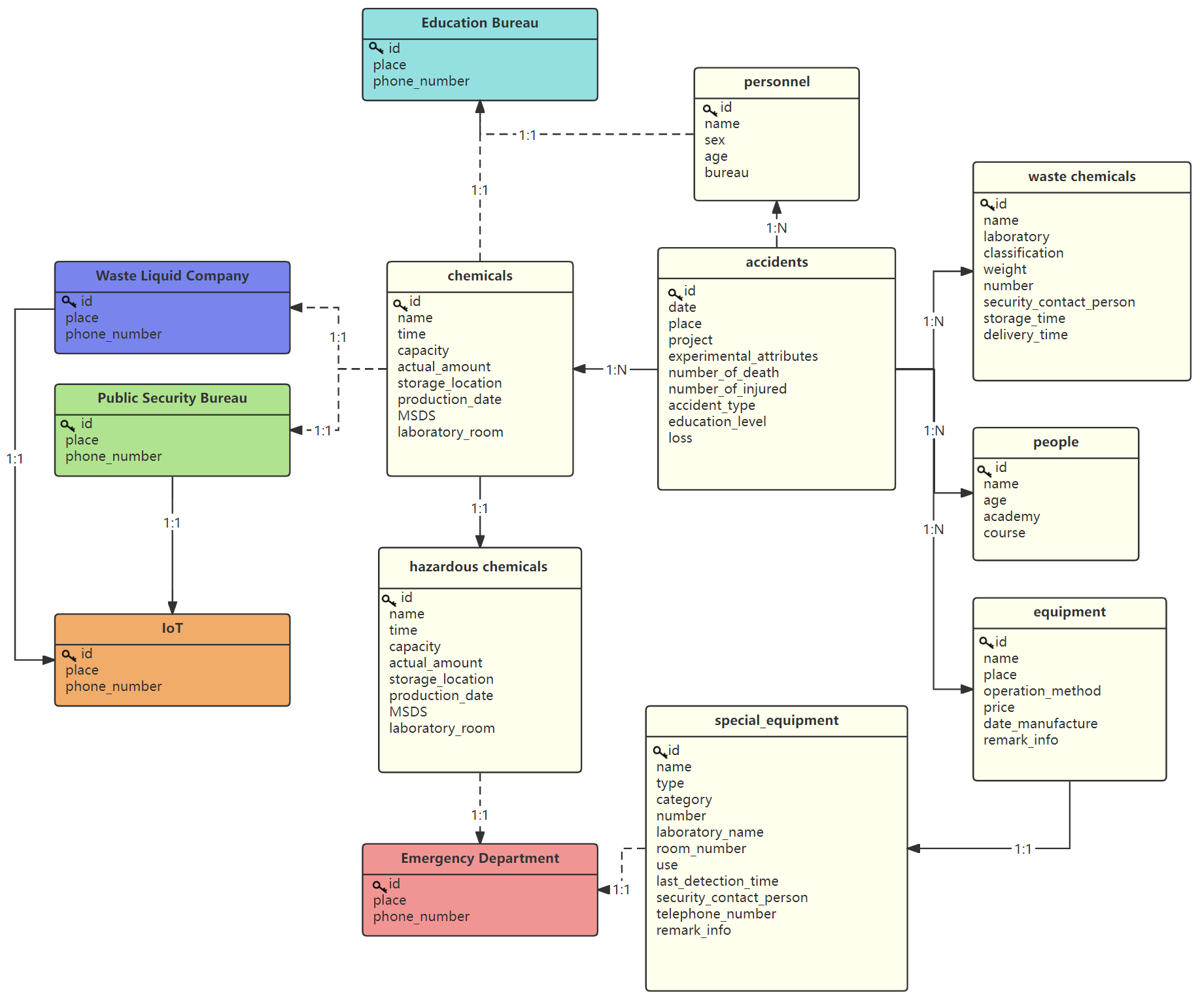
we proposed a laboratory manual database accident system based on data ownership safety architecture. Our proposed system we adopt literature and website to collect laboratory accident to establish manual database. We want to this database can collect more data, so we design a system that can store lab accident-related data with key algorithm. Not only lab experimenters can enter their data into our system, but also related companies and supervision departments can also view and share data in our proposed system. The advantage is that if some accidents is explosion, we can quickly get who are in labs, use which companies’ chemicals and equipment’s. this information. So, emergency departments can get fresh data to design secure project real time. We design confirmation and authorization method with binding person and data, using SM2 or RSA. We also want to decrease lab accident, so we analysis our manual accident database to establish a risk model. Though using predicted results, students can enter experiment information to get risk level. This makes safety education have targeted which can improve efficiency. Also, students can search in our manual database to find chemicals they may use whether they have caused incidents. Because our can get more accident data using public key to keep private, so our database can extend. Only supervision departments need to collect this data, data owners can choose to encrypt lab accident data with supervision departments’ public key to conditional sharing.
Our practical implications is our manual database is dynamical and extended. We also can use this method to establish equipment usage predictions in further. Through collecting hazardous chemicals usage, we can strengthen the management and control of certain hazardous chemicals use procedures and education. Through the statistics of experimental accidents, we can pay more attention when taking safety courses. Furthermore, our method can be applied to more scenarios, such as emergency correlation database in medical industry, which can quickly find a real data source to break data barriers.